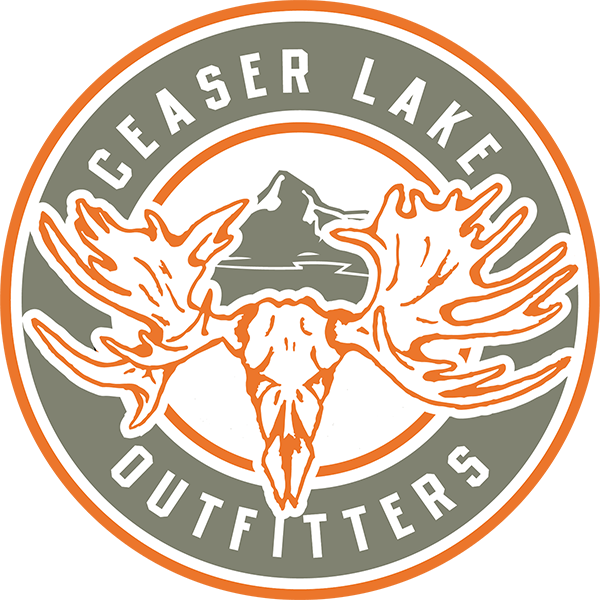Hunt info to help you prepare
During the hunt you will encounter a variety of challenging situations, this is the nature of the northern wilderness and having a positive and strong mindset will determine how you handle these challenges. Our guides will do their best to communicate with you through out the hunt and your overall success will be determined on your ability to work with your guide to get the job done.
The daily hunt plan will be made up by your guide. His experience and skill will take you in search of the species of choice. With that said please talk to you guide and discuss plans and your ideas. If you need a rest day or want to go deeper or stay out longer, please talk to him. Without communication they don’t know what you need or like. This is your adventure and they will do what they think is needed but sometimes your wants are different then others so you need to communicate your opinions. Its VERY IMPORTANT.
Aside from helping where you can… Your job is to shoot well when the time comes. This is the one aspect of the hunt we can’t do. Only shoot when you are comfortable and know you can make a clean quick kill. It is ONLY your fault if you pull the trigger and miss or wound in any circumstance. We will do our best to get you ready and present a shot. Be ready.
Photography
This is something we take pride in and hope you also take the time to get great pictures & videos of the hunt and some great trophy pictures. You only get one chance to take good photos of your hunt. Bring a good, Digital Camera like the Canon Powershot or Nikon compact models or similar, with an extra battery and memory card. Take photos of yourself, your guide in the field, camp, scenery and your trophy. (Please send me a CD or thumb drive as they are easier to use than prints; or, email me the best photos.) Using a digital camera, I take photos of each animal on 2 different memory cards, to be safe. Your guide will help you obtain nice shots of you and your animal. Try to get pictures with the use of the tripod and timer with the two of you or the group. Make sure to take pictures of camps and people. Having people in a picture will give you a better perspective as to the size and splendor of the landscape.
The following are important things to consider before taking the “Grip and Grin” photos: 1) 1) Clean the blood off the animal as best as possible and stick the tongue back in it’s mouth or cut it off. While taking pictures, the mouth can be held closed with your hand, by the ground (Moose, Bear and Caribou) or with some string/dental floss. To do this, cut a slit in the upper and lower lip or use needle and floss/thread and tie/sew the two together. 2) Maneuver the animal into a natural position with a nice background. Pictures that include a view of a far-off mountain and sky in the background are nice. 3) Remove all blood, rags, backpacks, etc. from the fore and backgrounds. 4) Take pictures with and without your weapon, and make sure the barrel is not pointed at anyone. 5) Take both horizontal and vertical pictures and some that are up close and some farther away (more scenery). 6) To best show the animal, sit behind the body (but not directly behind the horns/antlers) & sit in front of, but behind the plane of the animal. It is better to keep the horns against a natural background (earth or sky), not a shirt, jacket or beaming white face. Take pictures in several poses as you never know what will turn out the best. 7) Fill the frame, but do not cut off the animals legs, your gun barrel or head/hat. 8) Pay attention to the sun – it is best if the sun is behind the photographer. 9) Make sure the soles of your boots or palms are not pointed at the camera, keep a low profile (sit or kneel) behind or in front and to the side of the animal and don’t wrap your hands around the horn tips so that they are concealed. 10) Take a lot of pictures, and I’d suggest taking some creative ones in ie admiring the animal or eating back straps around the fire with the horns in the photo.
Most Clients always wish they took more photos during the hunt especially those moments you really don’t want to. Extreme wind , snow blizzards, intense rain, early morning sunrise and northern lights are all times when you need to make the effort to grab a snap shot of an experience only a few lucky people get to experience.
Communications
If you feel you’ll need to use a Satellite phone for business during the trip, I recommend that you purchase or rent a handheld satellite phone (Iridium or Globalstar) - contact Pivotel Satellite (Andy Cool – andy.cool@pivotel.com). He can get you one and will take really good care of you for us.
I recommend getting a Garmin InReach and having it figured out BEFORE you arrive. They are really handy if all you need is texting or sending short email. Pairing it with your smart phone makes life easy!
We are mostly using InReach devices now as they are the most reliable and cost effective. You may use the guides for periodically checking in at home. But they need to save them for our use.
